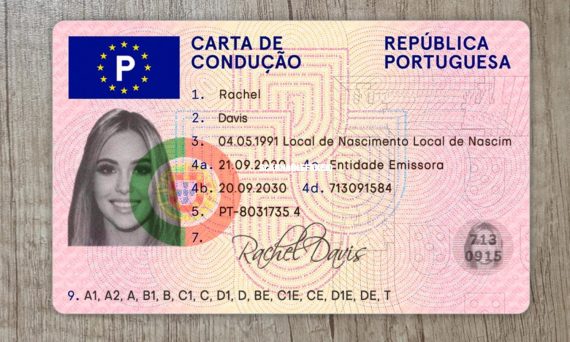Understanding the Driving Test: A Comprehensive Guide
Starting the journey to get a motorist's license is an exciting yet challenging experience for lots of. The driving test, often thought about the essential point in this journey, examines a prospect's ability to run an automobile securely and properly. In this thorough guide, we will dive into the intricacies of the driving test, covering its function, structure, requirements, and pointers for success. We will likewise attend to often asked concerns to additional clarify the process.
The Purpose of the Driving Test
The driving test serves numerous crucial functions:
- Safety Assurance: The primary objective of the driving test is to make sure that drivers can operate cars securely. This is paramount in preventing accidents and ensuring road safety for both chauffeurs and pedestrians.
- Assessment of Knowledge: The test examines a prospect's understanding of traffic laws, road indications, and safe driving practices.
- Skill Evaluation: Beyond theoretical knowledge, it examines useful driving abilities, consisting of maneuverability, parking, and adherence to traffic policies.
- Regulative Compliance: Each area has particular laws governing vehicle operation. The driving test guarantees that all motorists know and abide by these guidelines.
Structure of the Driving Test
While the particular structure of driving tests might differ by state or nation, they usually follow a common format, which can include the following components:
1. Composed Knowledge Test
Before hitting the roadway, prospects usually must pass a written understanding test, which consists of:
- Traffic Signs and Signals: Identifying different signs and signals, understanding their meanings and appropriate reactions.
- Road Rules: Questions on speed limitations, right-of-way rules, and actions to take in different traffic scenarios.
- Hazard Awareness: Scenarios to examine a prospect's capability to acknowledge and respond to potential roadway threats.
2. Vision Test
A vision test makes sure prospects can sufficiently see to drive. Prospects are generally asked to read letters or numbers from a range, guaranteeing they meet the vision requirements set by regulative authorities.
3. Road Test
The most considerable part is the useful road test. This is where candidates show their skills under the observation of a certified examiner. The roadway test generally includes:
- Pre-Drive Checklist: Checking mirrors, seat belts, and environments before beginning.
- Fundamental Maneuvers: Performing jobs such as parallel parking, turning, and lane modifications.
- Traffic Interaction: Navigating through traffic, obeying speed limitations, and yielding the right of way.
- Emergency Situations: Demonstrating how to react to unexpected road scenarios.
Table: Typical Driving Test Components
| Part | Description |
|---|---|
| Written Knowledge Test | Multiple-choice examination covering road rules and indications |
| Vision Test | Making sure candidate fulfills minimum vision requirements |
| Roadway Test | Practical assessment of driving abilities in real traffic circumstances |
Requirements for Taking the Driving Test
Before a candidate can arrange their driving test, there specify requirements that normally require to be satisfied, including:
- Age Requirements: Many areas have minimum age requirements (e.g., 16 or 18 years old).
- Knowing Permit: Candidates typically require to have held a student's permit for a given duration (typically six months to a year).
- Chauffeur Education Course: Some regions require completion of a driver's education course, which might include both class and practical training.
- Documentation: Candidates need to provide valid identification, evidence of residency, and any completed paperwork needed by the local Department of Motor Vehicles (DMV) or comparable authority.
(FAQs) Frequently Asked Questions
Q1: How do I schedule my driving test?
A1: Candidates can generally schedule their driving tests through the website or workplace of their regional DMV or licensing authority. Online booking options are often available for convenience.
Q2: What should I bring on the day of my driving test?
A2: Candidates should bring their student's license, documents showing residency, proof of identification, and a roadworthy automobile. Additionally, Teste De Direção provided during the scheduling must also be brought along.
Q3: What takes place if I fail my driving test?
A3: If a candidate fails the driving test, they are typically permitted to retake it after a waiting duration, which can range from days to weeks, depending upon the area's policies. It's recommended to practice the abilities that require improvement before retaking the test.
Q4: How long is the driving test?
A4: The period of a driving test can vary but usually lasts between 20 to 30 minutes, depending on the complexity of the path and the particular requirements set by the testing authority.
Tips for Success
Preparation is essential to passing the driving test. Consider the following ideas:
- Practice: Regularly practice driving in numerous conditions and situations to grow comfortable behind the wheel.
- Know the Laws: Familiarize yourself with regional traffic laws, indications, and guidelines to perform well on the written test and road test.
- Take a Mock Test: Have a knowledgeable driver accompany you for a practice test to mimic the actual experience and supply constructive feedback.
- Stay Calm: On the day of the test, try to remain calm and gathered. Stress and anxiety can hinder performance, so practice relaxation strategies ahead of time.
- Use Clear Signals: During the road test, ensure to utilize correct signaling and examine mirrors frequently. Clear interaction with other roadway users is important.
The driving test is a crucial step in acquiring a motorist's license and guaranteeing roadway safety. By understanding its structure, preparing effectively, and keeping typical inquiries in mind, candidates can approach the driving test with confidence. Whether it's the composed knowledge test or the practical driving assessment, diligent preparation and a calm disposition are factors that can substantially affect success on the roadway.

